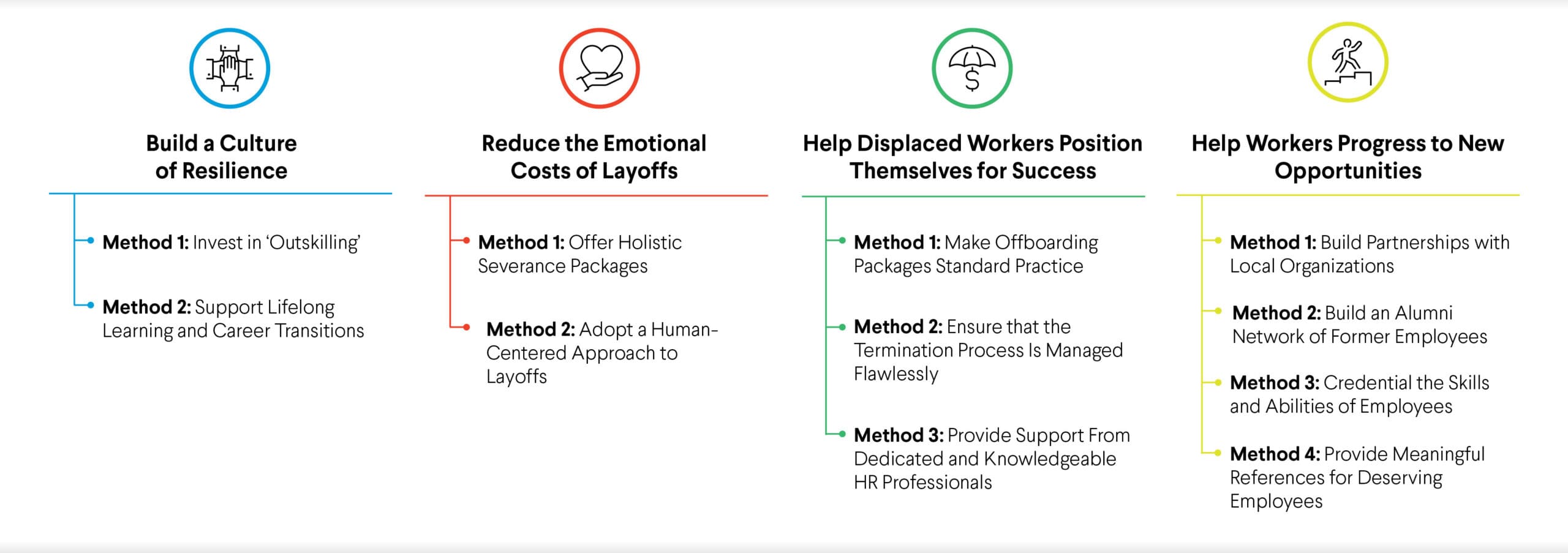
Corporate America: This Is Your Time to Lead
In times like these, there is a real opportunity for corporations to step out and up as leaders, using their power and influence to make a difference.

February 1, 2023
JFF urges employers to prepare for disruptions that could require layoffs by embracing ethical offboarding—an approach to downsizing that improves the future economic prospects of former employees and fosters long-term improvements in employee performance, engagement, and loyalty.
Employers whose organizations are able to thrive during and after periods of transition are those that prepare to manage difficult changes in advance—and likewise prepare their employees to deal with such changes—well before the need for staff cuts or other disruptive moves appear imminent.
Planning for layoffs involves challenging conversations and hard work. But planning is essential to ensuring that employees—both those who leave and those who stay—are able to continue to move forward in their careers, and that the organization can continue to prosper.
As companies move from a tight labor market where onboarding and retention were a primary focus to a potentially recessionary economy where layoffs and furloughs may be necessary, they should embrace what we at Jobs for the Future call ethical offboarding.
Ethical offboarding strategies are approaches to downsizing that not only improve the future economic prospects of former employees, but also foster long-term improvements in employee performance, engagement, and loyalty.

These strategies help companies reduce the pain of an economic downturn, position themselves for future growth, and lessen operational, legal, and reputational risks that may accompany downsizing.
In the road map to ethical offboarding that you can access below, we summarize the business imperatives supporting each strategy and recommend two or three concrete ways to take action. Each method has been shown to drive successful outcomes for both employers and employees—or has the potential to do so. All are practical, common-sense courses of action.
No matter how many of these methods you choose to adopt, the imperative is clear: Now is the time to take a stand.
Your efforts as an Impact Employer will set the stage for the future and help usher in a quick and sustainable recovery for workers, communities, customers, and businesses.

In times like these, there is a real opportunity for corporations to step out and up as leaders, using their power and influence to make a difference.

Corporate Action Platform Corporate leaders tap into JFF’s influence, resources, peer groups, and tools to learn what works, engage with changemakers, and adopt best practices that drive real return for businesses and their workers. Learn…

Prepare your company for the future of work by putting talent first. About Impact Employers Impact Employers take a fundamentally different approach to attracting, developing, and retaining talent—they prioritize the social and economic well-being of…